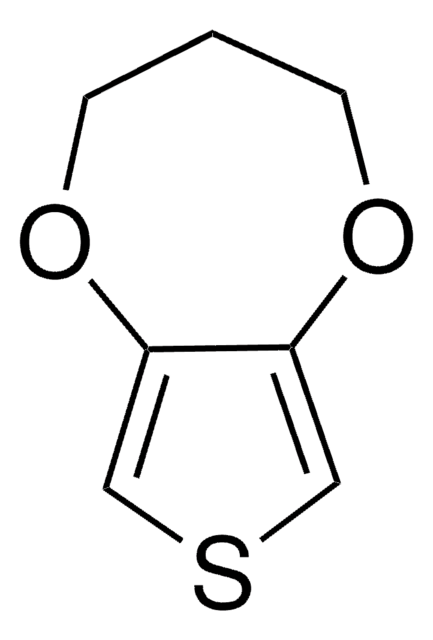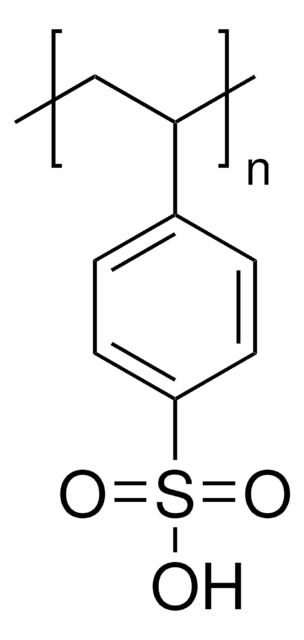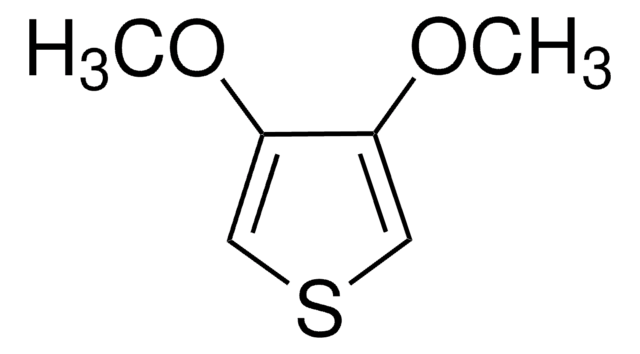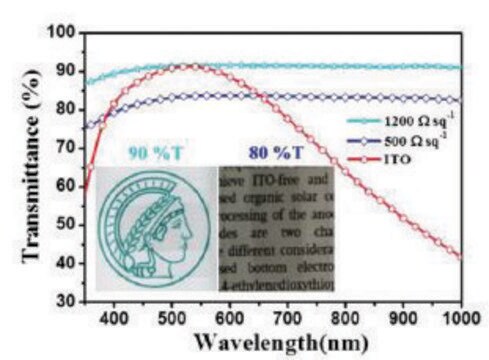Kluczowe dokumenty
483028
3,4-Ethylenedioxythiophene
97%
Synonim(y):
2,3-Dihydrothieno[3,4-b]-1,4-dioxin, EDOT
About This Item
Polecane produkty
Próba
97%
współczynnik refrakcji
n20/D 1.5765 (lit.)
tw
193 °C (lit.)
gęstość
1.331 g/mL at 25 °C (lit.)
temp. przechowywania
2-8°C
ciąg SMILES
C1COc2cscc2O1
InChI
1S/C6H6O2S/c1-2-8-6-4-9-3-5(6)7-1/h3-4H,1-2H2
Klucz InChI
GKWLILHTTGWKLQ-UHFFFAOYSA-N
Opis ogólny
Zastosowanie
It can be used:
- As a reductant in a one-pot synthesis of gold nanoparticles from HAuCl4 (254169).
- As a starting material used in palladium-catalyzed mono- and bis-arylation reactions.
- In the synthesis of conjugated polymers and copolymers, with potential optical applications.
Hasło ostrzegawcze
Danger
Zwroty wskazujące rodzaj zagrożenia
Zwroty wskazujące środki ostrożności
Klasyfikacja zagrożeń
Acute Tox. 3 Dermal - Acute Tox. 4 Oral - Eye Irrit. 2
Kod klasy składowania
6.1C - Combustible acute toxic Cat.3 / toxic compounds or compounds which causing chronic effects
Klasa zagrożenia wodnego (WGK)
WGK 2
Temperatura zapłonu (°F)
219.2 °F - closed cup
Temperatura zapłonu (°C)
104 °C - closed cup
Środki ochrony indywidualnej
Eyeshields, Faceshields, Gloves, type ABEK (EN14387) respirator filter
Wybierz jedną z najnowszych wersji:
Masz już ten produkt?
Dokumenty związane z niedawno zakupionymi produktami zostały zamieszczone w Bibliotece dokumentów.
Klienci oglądali również te produkty
Produkty
Conjugated polymers offer charge transport between inorganic, electrically conducting metals and organic, proton-conducting biological systems.
Nasz zespół naukowców ma doświadczenie we wszystkich obszarach badań, w tym w naukach przyrodniczych, materiałoznawstwie, syntezie chemicznej, chromatografii, analityce i wielu innych dziedzinach.
Skontaktuj się z zespołem ds. pomocy technicznej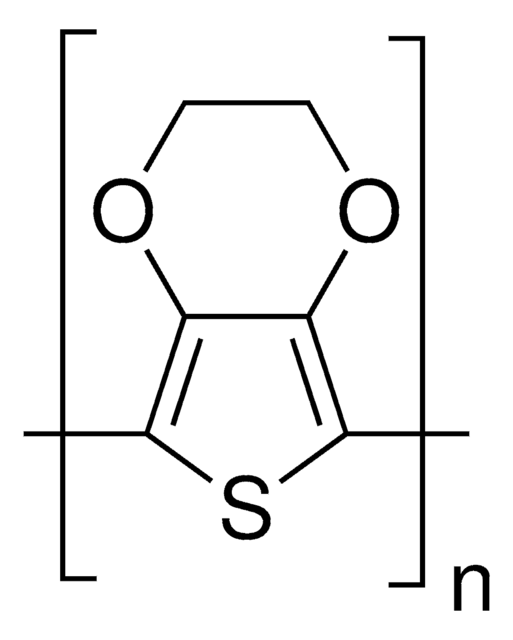
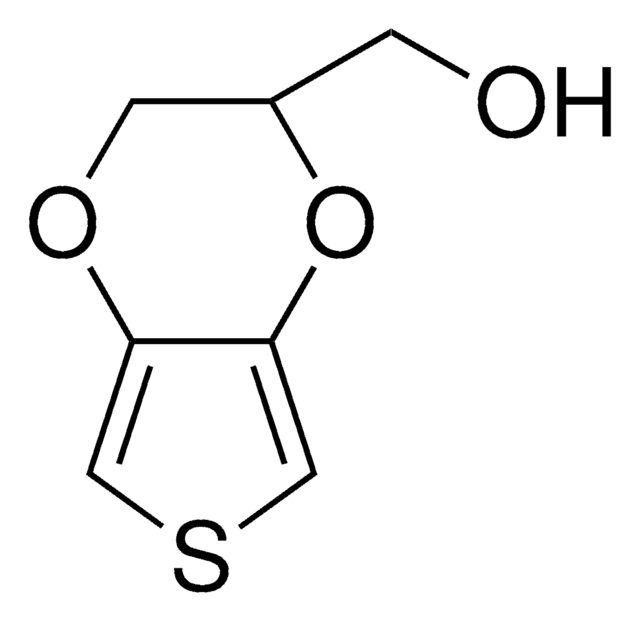

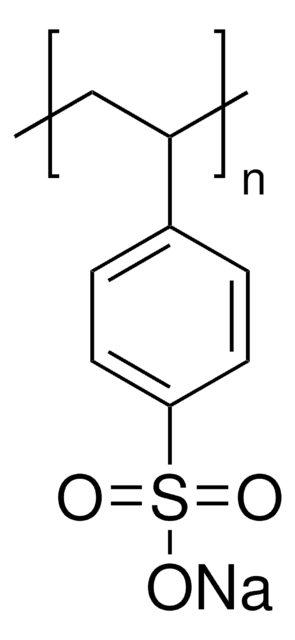
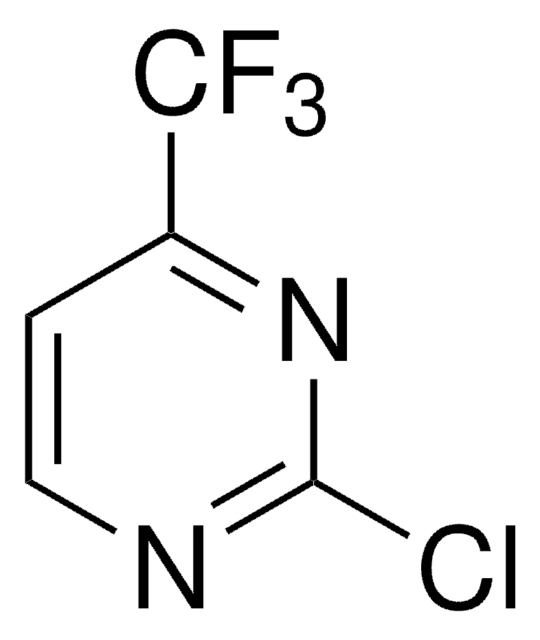
![2-Chloromethyl-2,3-dihydrothieno[3,4-b]-1,4-dioxine 95%](/deepweb/assets/sigmaaldrich/product/structures/422/187/4cc7b858-9e06-4ce2-8d39-d817b8313964/640/4cc7b858-9e06-4ce2-8d39-d817b8313964.png)
